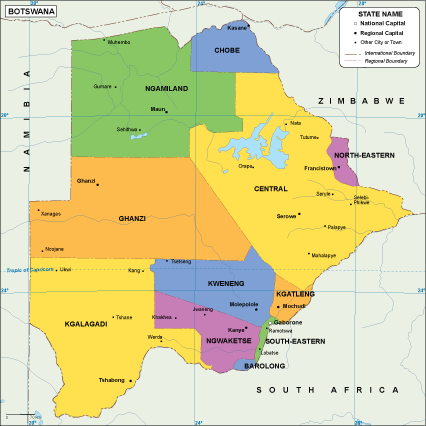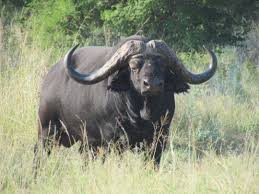The reintroduction of game farming has increased fears of poaching in Tsabong in Botswana’s Kgalagadi region by syndicates who operate with their South African counterparts.
Livestock are threatened by predators – but old-fashioned shepherding may be an effective solution
- Hits: 2201
Carnivores like leopards, lions and hyenas have been killing livestock for centuries, causing financial losses to farmers. In many parts of the world, farmers respond by killing these predators. This has greatly reduced the populations of some top predators like leopards and lions.
India's tiger population rises above 3,000
- Hits: 2143
India's wild tiger population—by far the largest in the world—has risen above 3,000, according to a census released Sunday, boosting efforts to conserve the endangered species.
For years, scientists and conservationists have urged China’s government to crack down on a thriving trade in wild animals that they say both threatens the nation’s rich biodiversity and increases the risk that a dangerous disease will jump from wildlife to humans.
Now, some of those pleas are being answered: On 1 May, officials will begin to enforce a strengthened Wildlife Protection Law that, together with other recent rules, expands China’s list of protected species and criminalizes the sale or consumption of meat from certain animals—including raccoon dogs—known to harbor viruses that can infect humans.
Many scientists are welcoming the new law, which was finalized in December 2022. It “clearly prohibits the consumption, hunting, trade, and transport of terrestrial animals that grow and breed naturally in the wild,” says Jiahai Lu, an epidemiologist at Sun Yat-Sen University, Guangzhou. Others say the restrictions could help crimp the wildlife meat trade that touched off the 2002 severe acute respiratory syndrome (SARS) outbreak and may have sparked the COVID-19 pandemic. Last month, for example, researchers released an analysis of genetic material collected at the Huanan Seafood Wholesale Market in Wuhan, China, that suggests raccoon dogs and other wildlife being sold illegally at the market were carrying SARS-CoV-2.
But the rules also have worrying weaknesses, researchers say. They permit, for example, farmers to raise raccoon dogs and other mammals for their fur—fueling concerns that the farms could promote the emergence of new human diseases, as pathogens flow among closely packed animals and their human keepers. “The continuation of the legal sale of these animals still represents a [zoonotic] risk, regardless of the intended purpose,” says Alice Hughes, a conservation biologist at the University of Hong Kong.
The government has also relaxed rules governing the captive breeding of animals used in traditional Chinese medicine and as pets. Conservationists fear that will enable poachers to use farms to “launder” animals illegally caught in the wild to legal markets.
 How to curb China's illegal wildlife trade, from tiger bones to totoaba bladders
How to curb China's illegal wildlife trade, from tiger bones to totoaba bladders
The moves represent the latest twist in China’s efforts to regulate the wildlife trade. In early 2003, the government temporarily banned all wild animal sales after the outbreak of SARS, which studies indicate moved from bats to humans via palm civets, a mainstay of the meat trade. But it eased restrictions after the SARS threat faded. Then, in February 2020, shortly after COVID-19 was linked to the Huanan market, officials permanently banned the consumption of meat from wild species to “eradicate the bad habit of indiscriminate consumption of wildlife, [and] effectively prevent major public health risks,” Xinhua, the official state news agency, said at the time. They cushioned the blow by paying compensation to farmers who had licenses to raise and sell the animals.
In May 2020, the Ministry of Agriculture and Rural Affairs clarified the extent of the ban, issuing a list of species that farmers can legally raise for meat, eggs, and milk. In addition to traditional livestock such as pigs and chickens, it identifies 16 “special” animals deemed to pose low human health risks. These include several species of deer, as well as animals not native to China, such as ostrich and emu.
The ministry also essentially approved the practice of farming minks, silver and arctic foxes, and raccoon dogs for fur but not meat. China is already one of the world’s largest fur producers, turning out 27 million animal pelts in 2021, according to ACTAsia, an animal welfare group. Researchers fear that, without strict biosafety measures, China’s fur farms could become disease hot spots. Farming creates the potential for virus spread, propagation, and transmission to humans, says veterinary virologist Conrad Freuling of the Friedrich Loeffler Institute. His research group, for example, has found that raccoon dogs can be infected with SARS-CoV-2 and transmit the virus to other animals even while showing “only subtle clinical signs” of illness.
Others point to SARS-CoV-2 outbreaks on European mink farms as an example of the dangers of fur farming. In the Netherlands in early 2020, the virus apparently spread from farm workers to minks, and then jumped from farm to farm and even back to humans. Farmers gassed 1 million minks to prevent them from becoming a reservoir for the virus. “Given the consequences as seen with COVID-19,” the threat of farmbased outbreaks must “be taken seriously,” Freuling says.
China is taking steps to strengthen animal disease surveillance, quarantine controls, and the use of protective equipment among farm workers, Lu says. But given the scale of China’s animal farms, they are “inevitably a ticking bomb for zoonotic disease to emerge,” says Ceres Kam, a wildlife campaigner with the Environmental Investigation Agency, a nongovernmental organization.
Conservationists, meanwhile, say making it easier for farmers to raise animals used in traditional Chinese medicine could put endangered pangolins, snakes, and other animals at greater risk. A major concern is that farmers will “use wild-caught individuals to boost the farmed population,” says a Chinese wildlife researcher, who spoke anonymously because of the sensitivity of the topic. The change, the scientist says, is “the most widely criticized part of this law’s revision.”

The controversial bill, years in the making, has broad support among the British public and the UK government maintains the measure will enhance protection for endangered species, despite a mountain of evidence to the contrary.
A new study published in Frontiers examines the contribution of private and communal land to rhino conservation as well as the financial and policy implications of such an arrangement.
Newsletter Subscribe
AGRI NEWS NET "LIVE" FEED
- CRA Group with it's media AGRI NEWS NET, FARMINGPORTAL.CO.ZA are globally linked with 30 International media's around the world, (30million) sharing exclusive news written and compiled by our News Team together with our team travelling South Africa. Our News is translated in German for the huge parts of the Europe Farming community.
- CRA Media independence is the absence of external control and influence of any other media. Our capacity is to "make decisions and act according to its logic," and distinguishes us from the vast majority of media- Committed, focused and always on time- Good positive News you can trust- We not part of the negative sensational news media of the 2025 century.
- This is AGRI NEWS NET- the world of Farming and Agriculture in your hand. "Good" News you can Trust- Updated 7 days a week- bringing you the latest News in Farming and Agriculture from all over the world. Tomorrow at 6 AM South African time you can start browsing again.
- First things first, scotch is actually a whiskey, er, whisky. Whiskey is the spelling in the United States and Ireland. Whisky is the spelling in Canada, Japan, and Scotland. What sets Scotch whisky apart from other whiskies is that Scotch whisky is entirely produced and bottled in Scotland. There is no wrong way to drink Jameson Irish Whiskey but, we do ask you to drink responsibly.
Popular News Tags
AGRI NEWS NET AUDIO CAST Feeding-
- What Needs to Change in Farming and Agriculture in 2025
- AGRI NEWS RUSH - News Headlines of the Week 18/01/2025
- Farmer safety in South Africa in 2025
- The Economics of Farming and Agriculture in South Africa 2025
- The global wine market 2025
- AGRI NEWS RUSH - News Headlines of the Week 11/01/2024
- Artificial Intelligence: All That Glitters Is Not Gold
- GLOBAL WATER OUTLOOK TO 2025 Averting an Impending Crisis

















